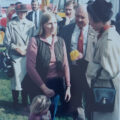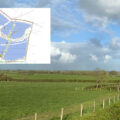Alice EJ Miller BVSC DBR MRCVS
Friars Moor Livestock Health
The autumn calving season is well and truly under way, and I hope that for those who are busy with this, that the period is successful!
With most cows there is no need to intervene as they give birth unaided. But, like humans, the time taken varies between individuals. Despite the nerve-wracking wait, if the cow continues to make progress, with productive contractions, it is best just to quietly observe the process from a distance. Cameras in the calving yard are recommended.
A calving problem will become apparent if labour ceases, a cow is in distress, or the calf does not appear, despite strong contractions. It is therefore important that you are aware of when a cow started labour. This information should be communicated within a big team. Whiteboards in calving pens or team WhatsApp groups work well.
There are many causes for calving difficulties, and they can be associated with either the dam, the calf, or both. The only way to diagnose the problem is to perform an internal examination. I would always recommend wearing clean arm-length gloves – to protect both yourself and the cow from infection – and use plenty of lubrication to avoid damage. It is important that the cow is well restrained, in a calving pen, with plenty of room should she get down to push. For this reason, I would never calve a cow in a crush.
Examination of the dam could reveal an obstruction of the birth canal, where the calf physically cannot pass. This could be due to a narrow pelvis, incomplete dilation, or a twisted uterus. A vet will be required in the case of a narrow pelvis or a uterine torsion. Where dilation is incomplete the cow may need more time, the calf position may need correcting, or she could have Ringwomb – which is rare in cattle and would require a vet.
Alternatively, progression can fail when the uterus stops contracting. A common cause is low calcium, which is needed for muscle contraction. This is common in older cows – four years plus – and oral calcium boluses at calving can help. Further measures should be discussed with your vet if several cows are affected.
Examination of the cow may instead reveal a calf problem. Occasionally we find that some calves are just too big and must be delivered by caesarean. Other times we find a foetal deformity. But more commonly a calf or twins are just not presented or positioned correctly. If a calf is in the wrong position, it cannot engage in the pelvis. A calf needs to be in the pelvis to activate pressure-sensitive receptors which release hormones required for the next stage of labour. Without them the cow does not progress. Correction is key and either a cow will then continue herself or gentle traction may be required. Please do not hesitate to call us even if just for advice.










Leave a Reply